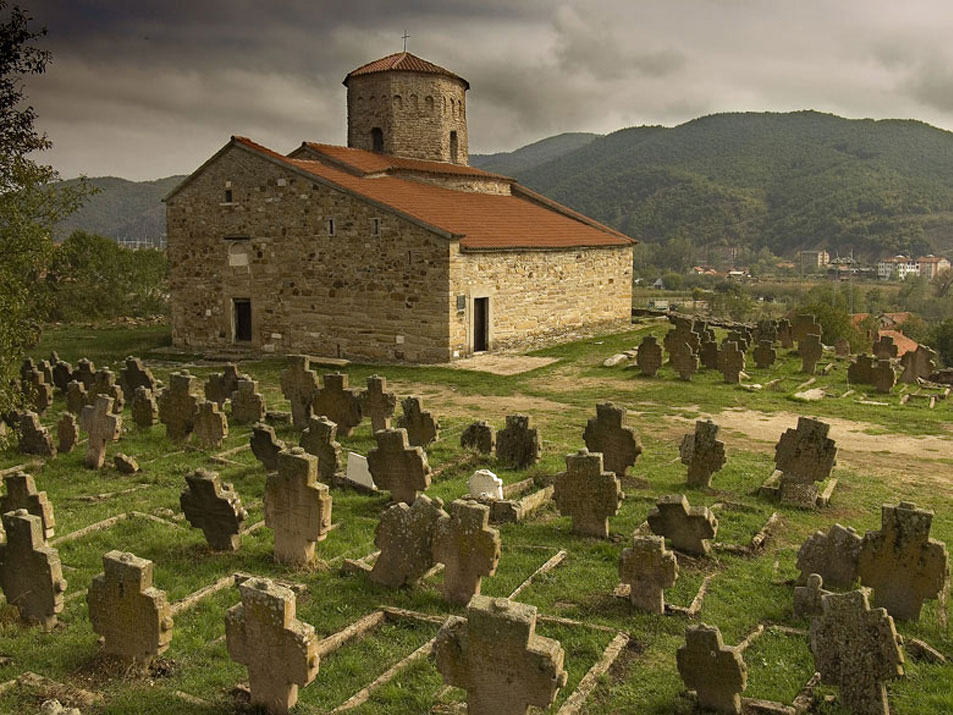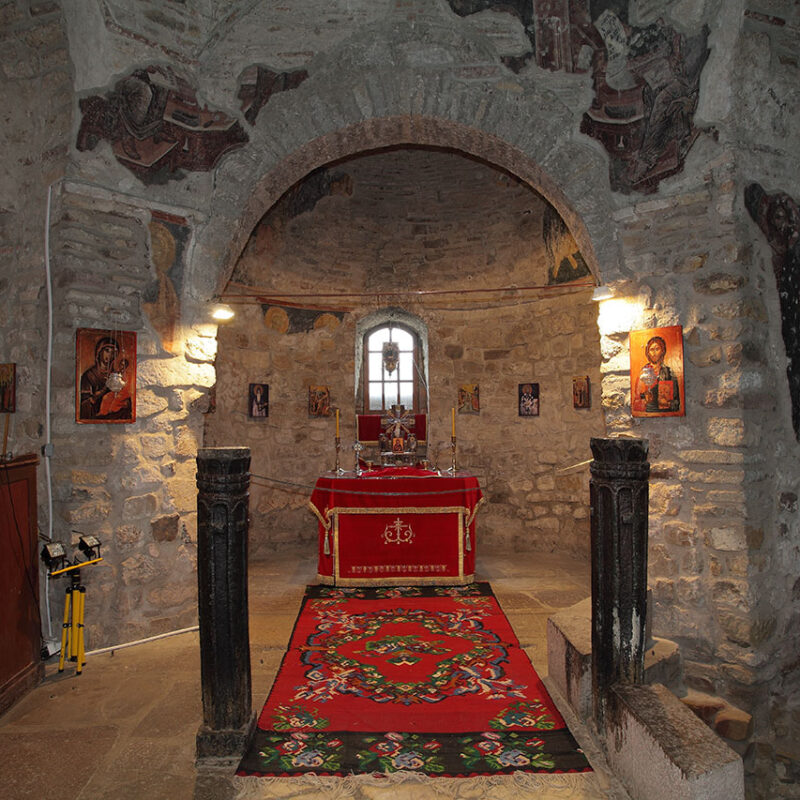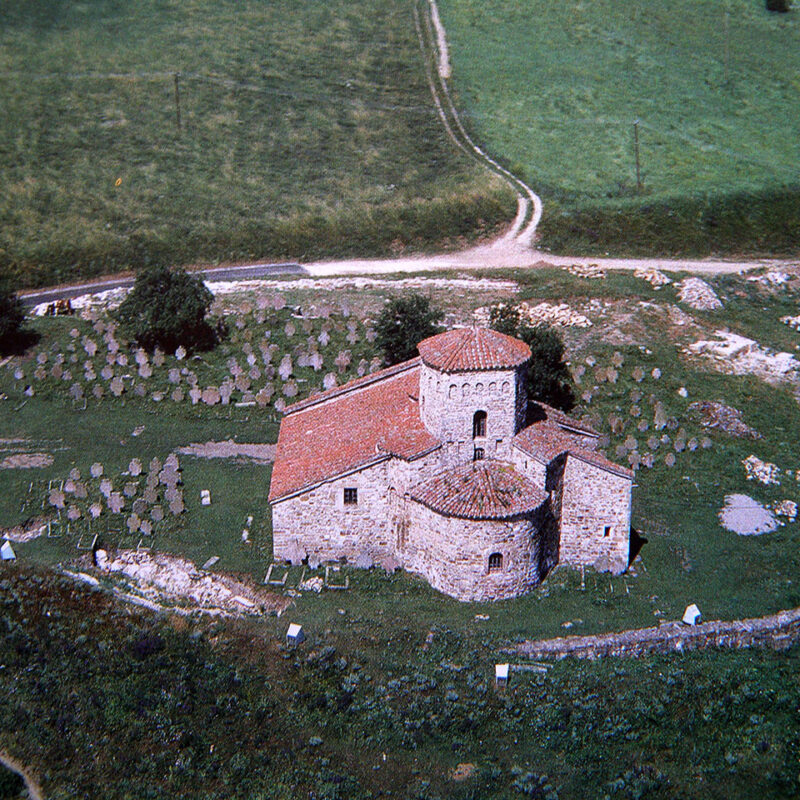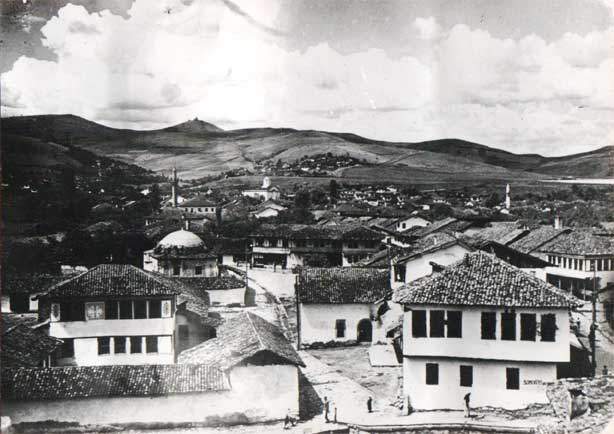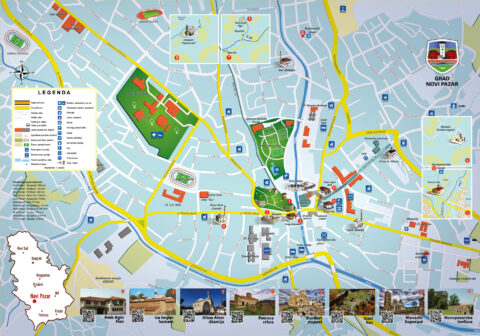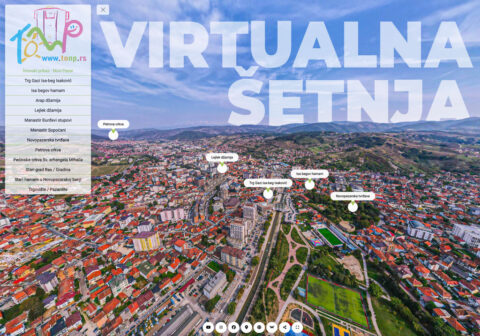Above the right bank of the Dezevska river, not far from its mouth in Raska, in the northeastern part of Novi Pazar, there is the church of the Holy Apostles Peter and Paul, popularly known as St.Peter’s church.
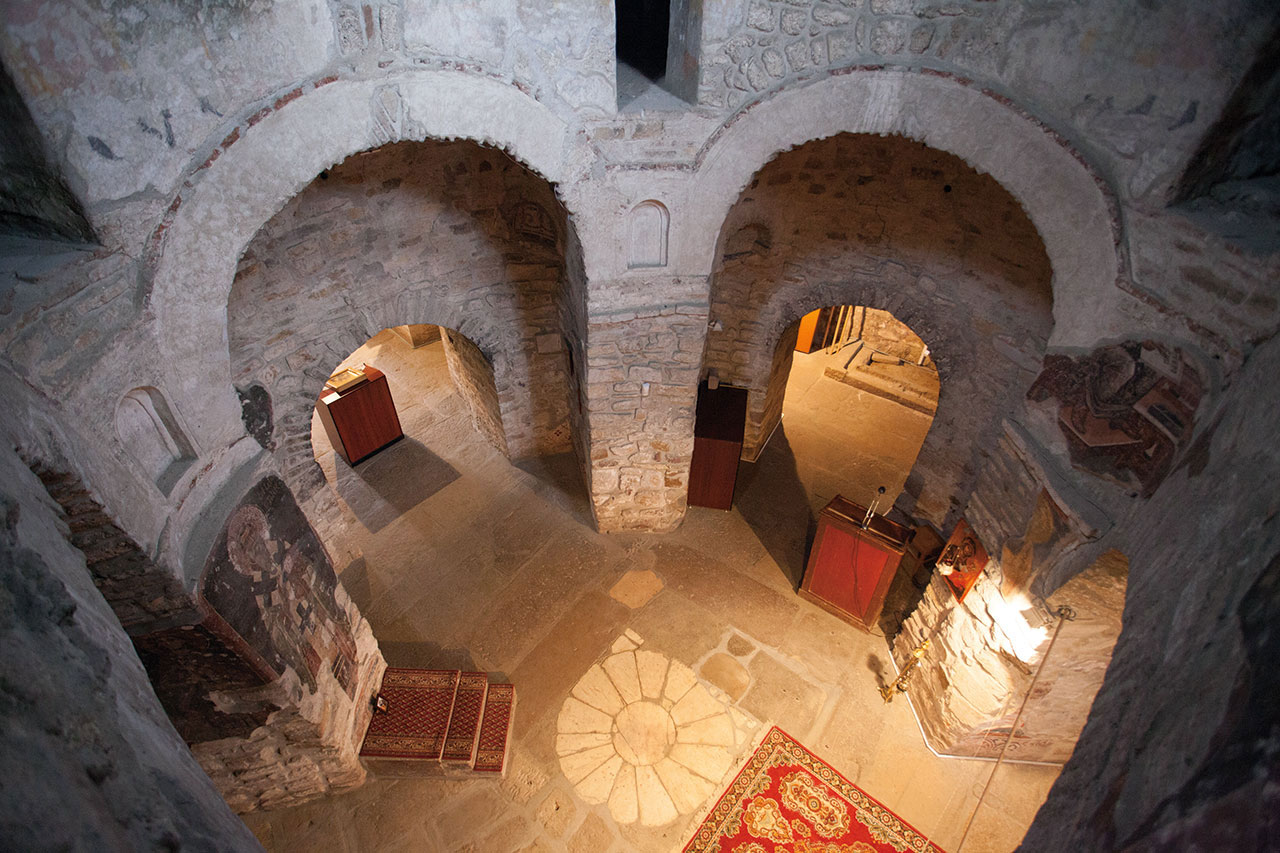
The Restoration Was Carried Out In 1728.
The Current Appearance, After World War IIAll the biggest changes in architecture and overall appearance of St.Peter's churche were made during the Turkish rule. During the Austrian-Turkish wars at the end of the XVII century, the church was partly in ruins. According to the inscription above the western entrance, the renovation was carried out in 1728. Most of the openings-passages acquired their appearance at that time, the floor in the church, made of tombstones, originates also from the time of that restoration.
The last major works were most likely carried out in 1835, when a large room covered with a wooden structure was built on the south side. All the large windows on the dome of the altar apse were almost bricked up, and the church was plastered both outside and inside.
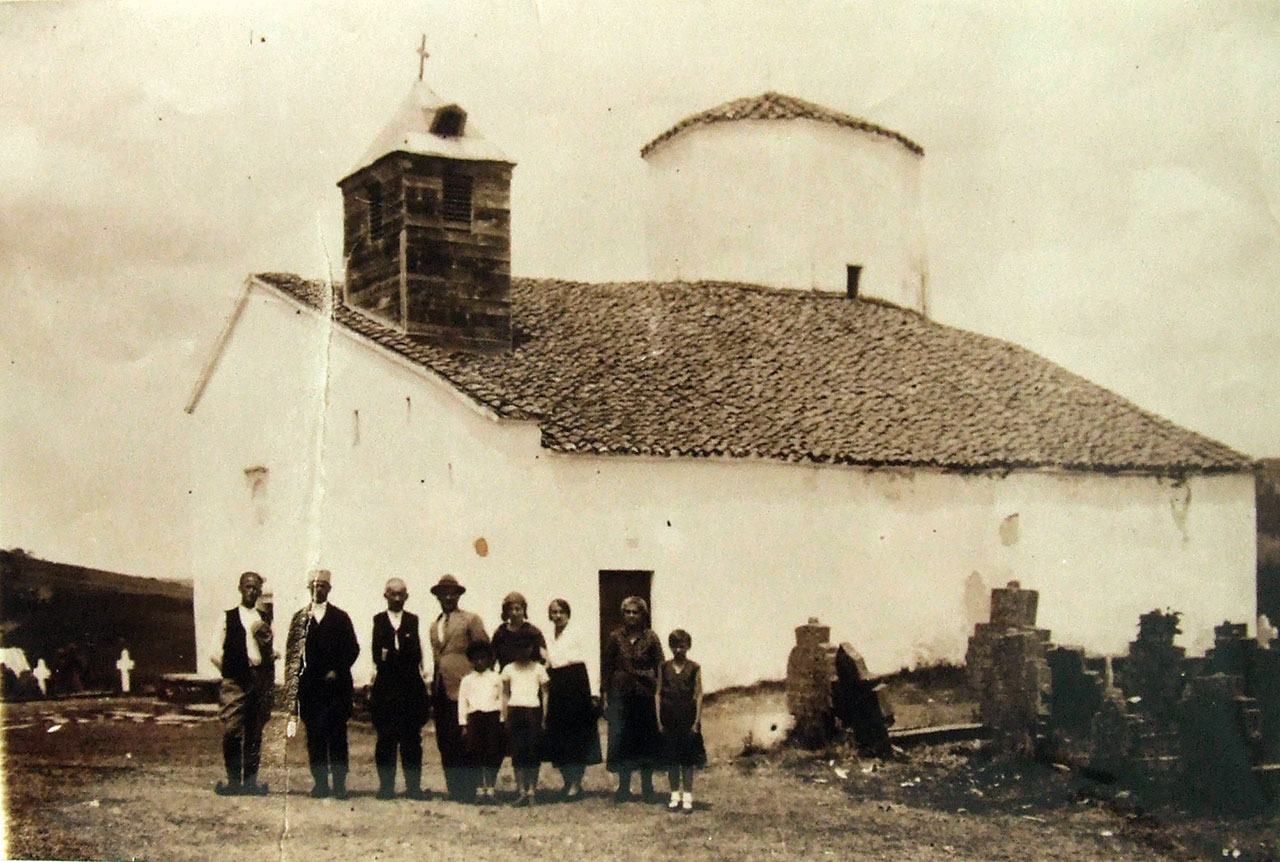
From The Beginning Of The V Century AD
Rich DiscoveryIn 1957, during the excavations of the foundations of the church, a rich hoard of exhibits from the beginning of the V century BC was discovered. (Greek painted vases, gold pectorals, appliqués, fibula belts, silver and bronze vessels and numerous beads made of amber) It is assumed that they belonged to representatives of the local aristocracy. From the archaeological excavations that followed it was concluded that the church was built over a prehistoric tumulus in which burials were carried out from the Bronze Age until the early Iron Age. The church acquired its current appearance upon the first conservation works carried out after the Second World War.
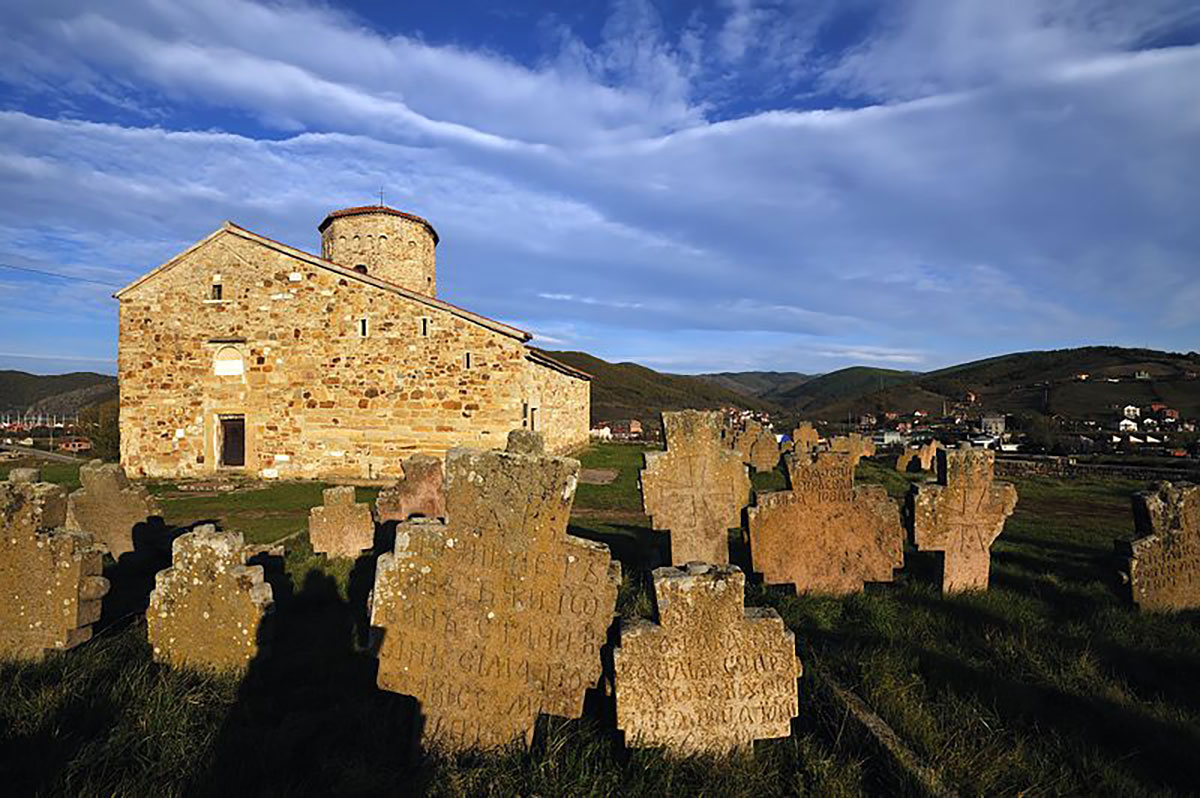
Tit, učenik apostola Pavla
Izgradnja crkve u sredino 9. veka.Po predanju i po jednom rodoslovu koji je prepisan u 17. veku, Petrovu crkvu je podigao apostol Tit, učenik apostola Pavla. Sveti Sava se pozivao na ovo predanje jer se autokefalnost (samostalnost) neke crkve mogla steći samo ukoliko je na njenom tlu postojao hram podignut od nekog od Hristovih apostola. Po drugom predanju zapisanom krajem 12. veka u Letopisu popa Dukljanina kaže se da je kralj Belo Pavlimir ratovao protiv raškog župana Lutomira i da je sa sobom poveo Rimljane. Posle pobede nad županom Raške Rimljani su sagradili tvrđavu Bello i crkvu u čast blaženog Petra apostola u mestu blizu Caldanae (Banje). Ovi događaji bi izgradnju crkve stavili u sredinu 9. veka.
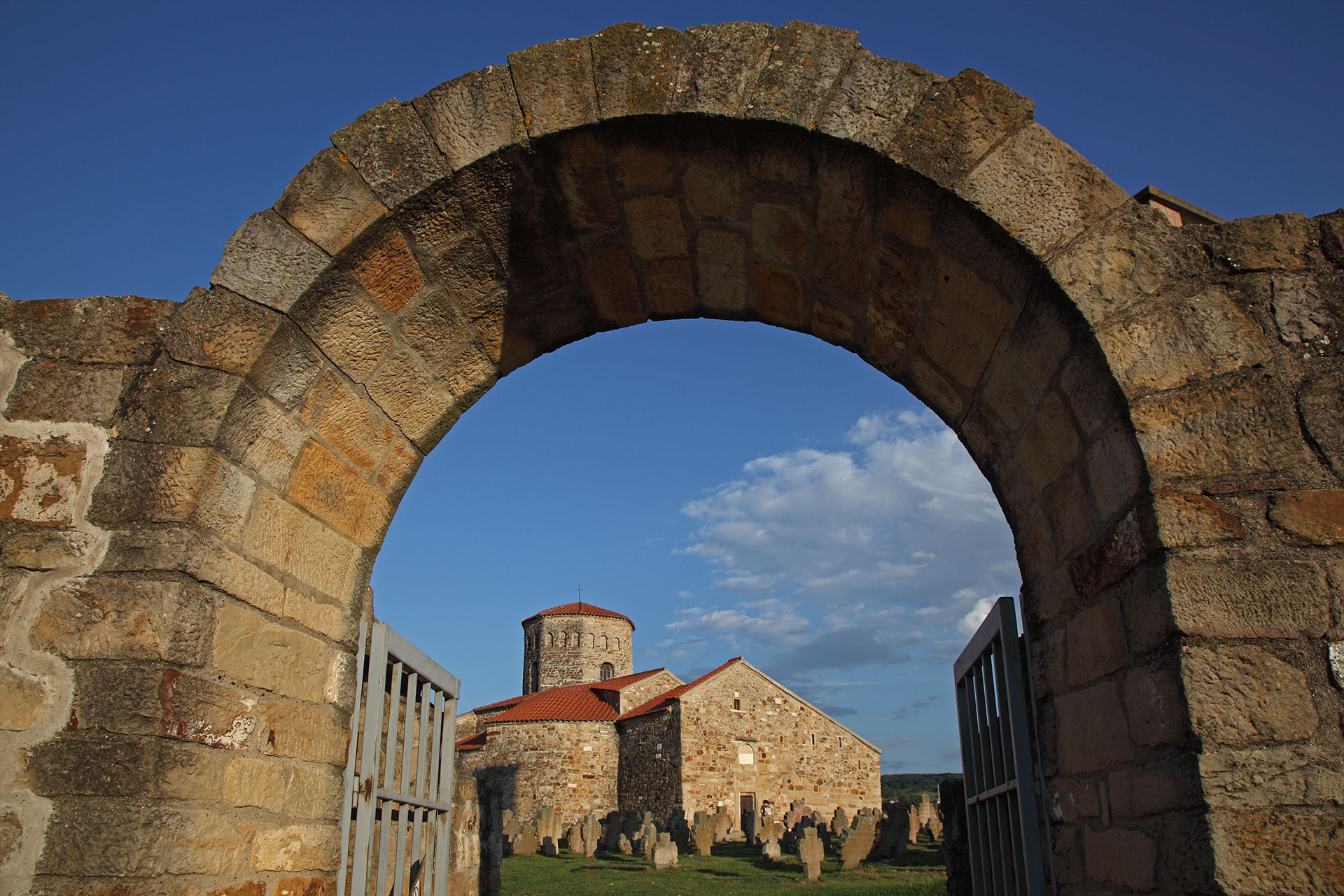
Stefan Nemanja And St. Peter's Church
The first written mention dates back to 1020It is not known for sure when St,Peter's Church was built. The first written mention dates from 1020 in the charter of the Byzantine Emperor Vasilij II. Until Stefan Nemanja, there had not been any direct mentions of Peter's church in historical sources. It is known that Nemanja was baptized in it according to the rites of the Orthodox Church, that the act was performed by the Ras bishop Leontije. At the state assembly convened by Nemanja in Peter's church against religious heresy, Bishop Jeftimije of Ras was present. On the Annunciation in 1196, another state assembly was held in Peter's church, attended by the third bishop of Ras, Kalinik. Stefan Nemanja then abdicated in favor of his second son Stefan and became a monk with his wife Ana on the same day.
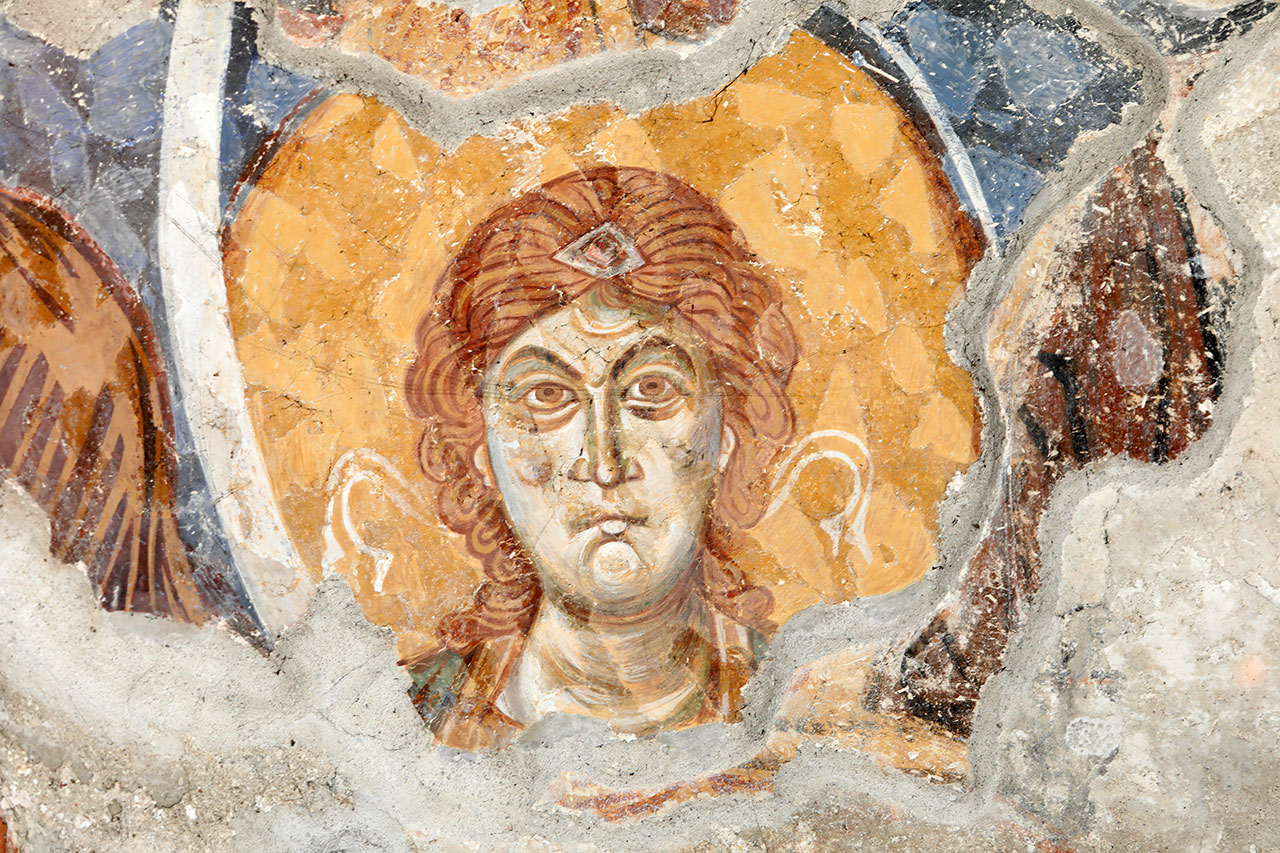
Appearance Of The Early Byzantine Church
VII CenturyThe first conservation-restoration works began in 1954, and in 1956 all internal wall surfaces with remains were systematically discovered and contained remains of medieval paintings. St.Peter's Church, which was demolished several times, rebuilt and extended, does not represent an architectural work from one era. It is the oldest preserved medieval church in Serbia. The appearance of the early Byzantine church in the upper parts is not known, nor is the time when it crashed down. Perhaps that event could be connected with the immigration of Slavs at the end of the VII or the beginning of the VII century.Više puta rušena, obnavljana i dograđivana Petrova crkva ne predstavlja arhitektonsko delo iz jedne epohe. Najstarija je sačuvana srednjovekovna crkva u Srbiji. Izgled ranovizantijske crkve u gornjim delovima nije poznat, kao ni vreme kada je urušena. Možda bi se taj događaj mogao dovesti u vezu sa doseljavanjem Slovena krajem 6. ili početkom 7. veka.
GALLERY
FRESCA
Explore
THE OLDEST SERBIAN CHURCH
At the very entrance to Novi Pazar, on a hill that dominates the surroundings, stands St. Peter’s Church, the oldest sacred monument of the Slavs in the Balkans. Extremely important for the study of the history of sacral architecture, this building represents a unique object in terms of its architectural structure. As the oldest monument of Serbian ecclesiastical architecture, it contains the remains and testimonies of many eras in its building structure.
ST. PETER'S CHURCH
The remaining fresco painting of St. Peter’s Church was preserved in four layers of paintings. The oldest layer includes a painting that has been preserved very poorly due to the structure of the fresco plaster in which beaten stone, very little lime, and some kind of resin were used as a binding material. Most of it has been preserved in the tambour of the dome, where scenes from the early life of Christ were painted. This layer of painting most likely dates from the XIX or X century.
The frescoes from the altar area belong to the second layer of painting: a medallion with a bust of the Virgin of Orante. Underneath, there are four figures of the apostles and one angel each on the left and right. This type of painting system may originate from the southern part of the Apennine peninsula and most likely belongs to the first half of the XI century.
The third and least preserved fresco layer includes two damaged figures of St. archbishop from the Adoration of Agnes in the first ground zone of the altar apse, St. the archangel Michael at the north end of the apse, the upper part of the figure of the apostle Peter on the north-east pilaster and the long Greek inscription of verses 13 and 14 of the 33rd Psalm of King David below a XIII-century bust of Pantokrator in the cupola of the dome. The frescoes of the third layer were most likely created immediately after the painting of George’s Pillars around 1180.
The fourth, the newest layer of paintings, has been preserved the most. The founder was most likely King Uros I, immediately after coming to the throne (in 1243). The founding composition was located in the southern conch, on the eastern half, and on the western two figures of martyrs; St. Christopher was preserved in its entirety. The arrangement system of paintings from the XIII century was apparently based on respecting the arrangement of frescoes from the IX century. In the cupola of the dome there is the image of Christ Pantokrator. Below it is a frieze with Old Testament busts prophets and four angels. Surrounding the gallery, there are scenes of Flowers on the north side and the Crucifixion on the east side. Evangelists were depicted on the composition of the vaults of four shells. On the southwestern pilaster there is the figure of St. John the Merciful. In the western shell, there are the figures of St. Efrema Sirin and St. Panteleimon. The Assumption of the Virgin Mary was painted on the east wall of the original small chancel, and on the south wall, above the passage, there is a large bust of St. Nicholas.
Since 1979, Peter’s church, together with Ras fortress, Sopocani and St. George’s Pillars has been on the UNESCO list of world cultural and natural heritage.
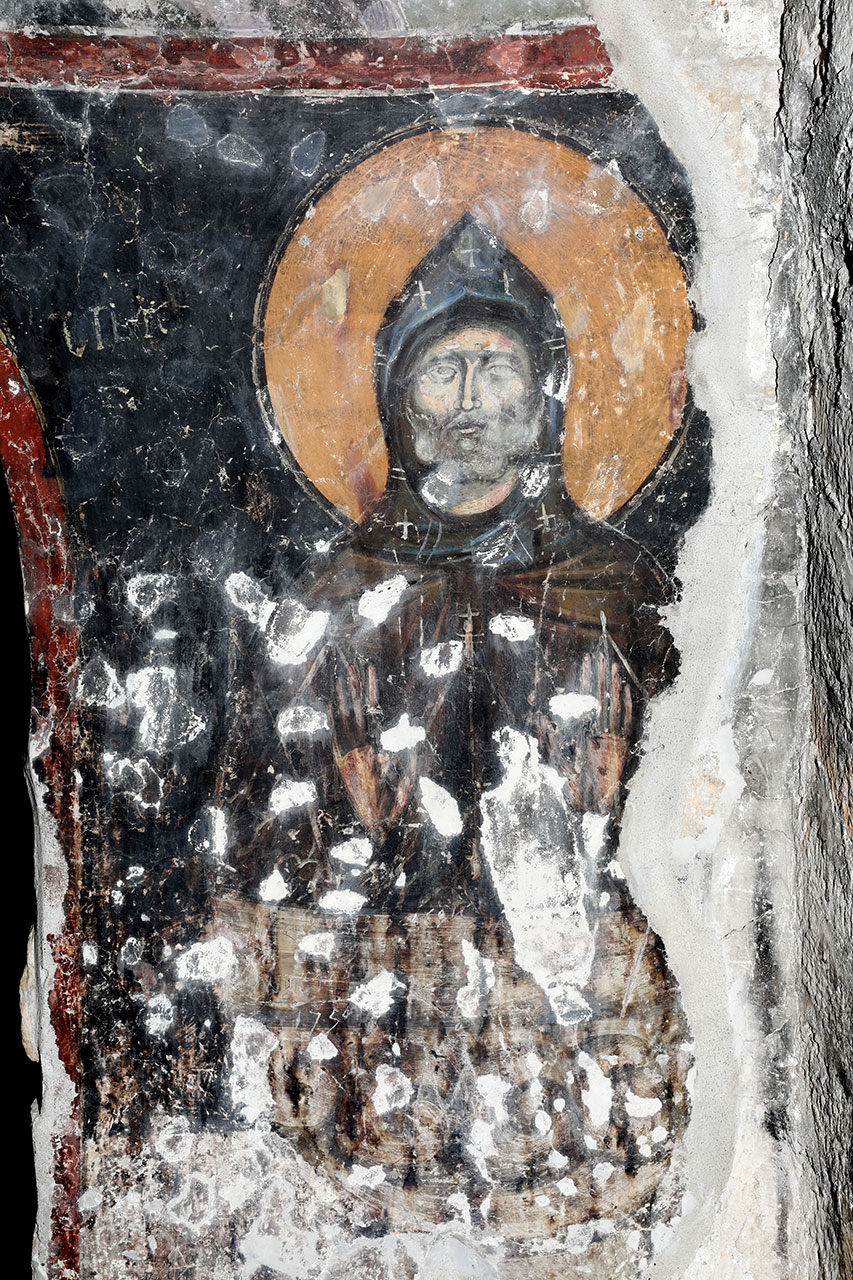
St. Peter’s Church was the seat of the Byzantine Episcopate and Raska mythology. According to the tale, the church was built by Apostle Titus, a disciple of Apostle Paul. The preserved painting represents the oldest Serbian painting. Researches have established that there was an early Christian cultural building, probably a baptistery, built in the VI century on the site of the church. The core of today’s church are precisely the remains of that oldest building.
It is in the central part, designed in the form of a quatrefoil cross, inscribed in a circular wall with radial walls on the north and south sides. In this tumulus, which dates back to the V century BC. Greek vases, silverware, gold jewelry, glass and amber objects and ornaments of exceptional scientific value were found. Probably during the time of the prince Caslav, when Serbia expanded its borders and gained relative independence, the church was thoroughly reconstructed in its upper part. Without changing the basic circular shape of the previous building, the renovation gave it a dome constructed on trumpets, then a gallery on the first floor, which in a ring completely encompassed the domes except for the eastern side and other elements that, with their construction and shapes, indicate their pre-Roman origin from the Littoral.
On the inner wall surfaces of the church, there are remains of frescoes, the origin of which, by chance, follows the chronology of architectural changes in the church. The fund of wall decorations consists of fragments of shallow relief plastic, which are assumed to originate from the VIII and IX centuries, and several more layers of unevenly preserved frescoes.
The oldest layer is preserved in the tambour of the cube, under the tambour and on the surfaces of the cubic base. It originates, probably, from the V century. The slightly better-preserved second layer on the walls of the apse, where you can see the figure of the Apostle Peter, the Virgin “Valuables”, the remains of the Adoration of the Archbishops scene, etc., was painted at the end of the 12th century.
In the dome and under-dome space, the lower area of the church and the inner narthex, there is the best-preserved painting from the end of the XIII century, which has stylistic similarities with the frescoes in the Arilje I chapel of King Dragutin on Djurdjevi Pillars.
As a result of the later renovation, the narthex was created. The church underwent extensive renovations in 1728 during the reign of Arsenius IV, as evidenced by the surviving inscription. Then the upper parts of the church-gallery, the vaults and the roof, partially changed their shapes.
In the first half of the XIX century, a corner space was added along the entire southern side of the church. Significant events in the history of Serbian people are connected to this monument. In the X century, the church became the center of the bishopric, and it would retain this role almost throughout the Middle Ages. According to the testimony of old Serbian biographers, Stefan Nemanja was re-baptized in Peter’s church and accepted the Orthodox faith. There was also a Parliament where Nemanja handed over the throne to his son Stefan Prvovencani. Here, Stefan Nemanja became a monk and was named Simeon.











